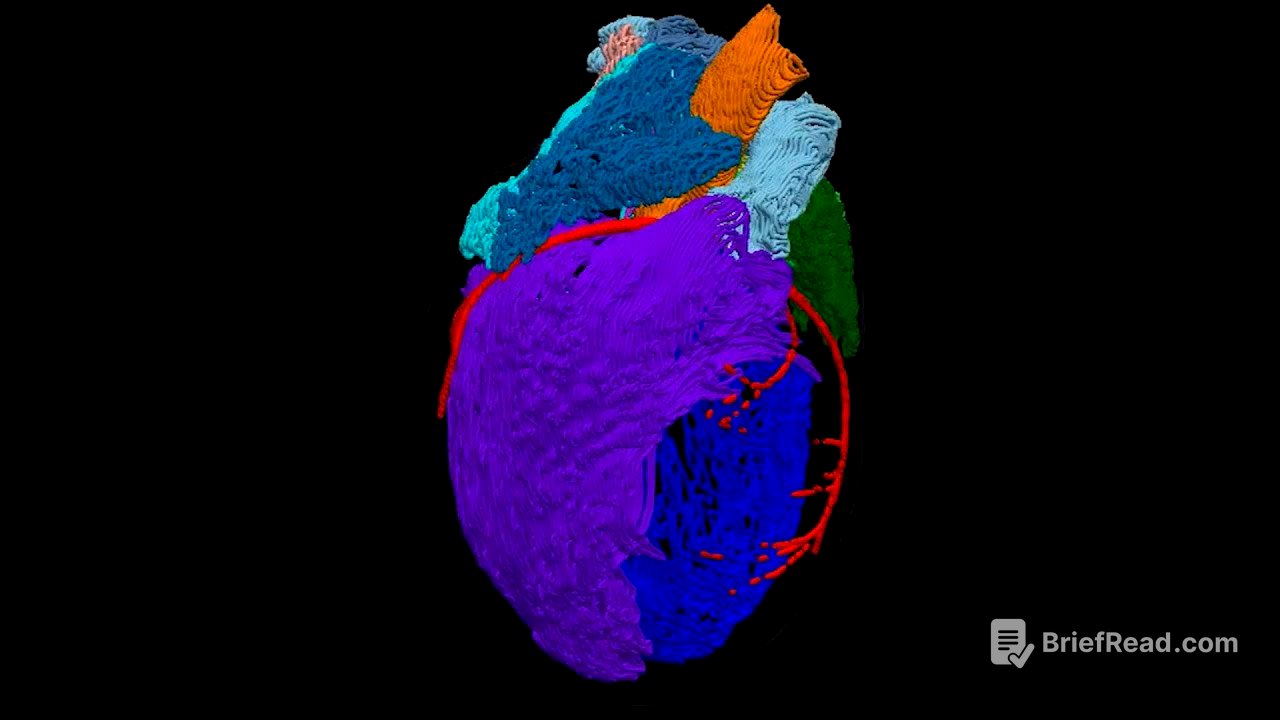TLDR;
The video talks about the heart's mini-brain, the intracardiac nervous system (ICN), and how scientists created a virtual 3D model of a rat heart to study it. This model shows the detailed structure of the ICN, which could help in treating heart conditions in the future.
- The heart has its own mini-brain called the intracardiac nervous system (ICN).
- A virtual 3D heart model was created to study the ICN in detail.
- The 3D model shows where the neurons of the ICN are located, which can help in treating heart conditions.
Introduction to the Heart's Mini-Brain [0:07]
The heart beats around 100,000 times a day, pumping a lot of blood. This pumping action is mainly controlled by the brain and the autonomic nervous system. But, the heart also has its own backup system, a mini-brain called the intracardiac nervous system (ICN). The ICN helps in fine-tuning signals from the autonomic nervous system, ensuring the heart pumps smoothly. A well-functioning ICN is super important for good heart health.
Challenges in Understanding the ICN [0:40]
The heart's mini-brain, or ICN, is quite complex, and scientists don't fully understand how it works. To tackle this, researchers have created a virtual 3D heart model. This model showcases the ICN in great detail and could help researchers study the function of the heart's neurons more effectively.
Creating the 3D Heart Model [0:59]
The 3D model is based on a rat's heart. To build it, researchers used a special microscope that cut off microscopic layers of the heart and took pictures. They stacked about 750,000 images together to reveal the 3D structure of the heart at the cellular level. This detailed imaging helps in seeing the heart's structure very clearly.
Findings from the 3D Model [1:18]
The 3D image showed that the neurons making up the ICN are clustered at the top of the heart, where the veins and arteries enter and leave. These neurons also extend down the left atrium on the back of the heart. Knowing the location of these neuron clusters will help scientists and physicians better understand the roles these neurons play.
Future Applications [1:40]
In the future, this information could be used to find new and effective ways to repair and treat heart conditions. This detailed understanding of the ICN could lead to better treatments for various heart problems.









